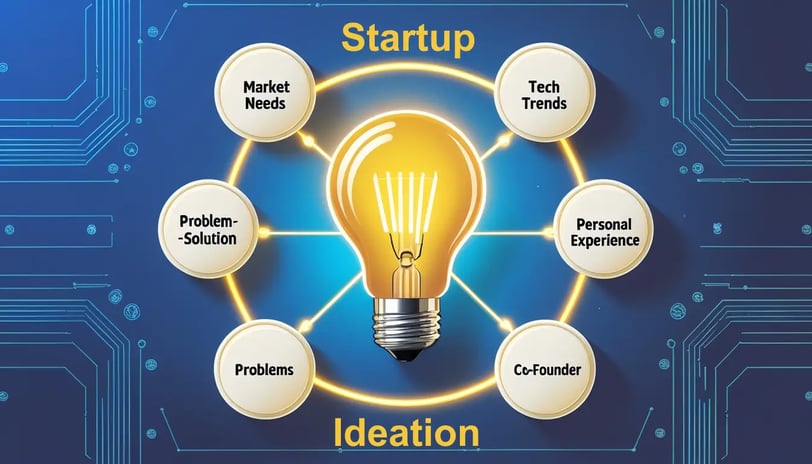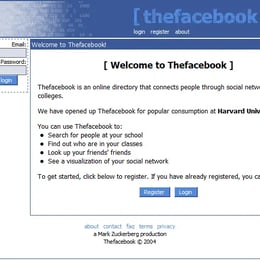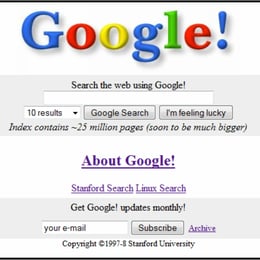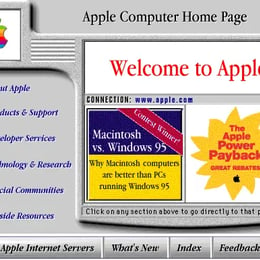
How to Get Startup Ideas?
Startup idea generator: Learn how to generate innovative startup ideas, avoid common pitfalls, & find your winning business concept. Start building now!
Fabio Silva
1/2/202526 min read
Introduction
Searching for that million-dollar startup idea? You're not alone. Many aspiring entrepreneurs struggle to find that spark, often feeling overwhelmed by the pressure to innovate. But what if the key isn't to think harder, but to see more clearly?
This guide will equip you with the strategies to move beyond forced ideation, endless brainstorms and cultivate a mindset that naturally uncovers promising startup opportunities. Let's unlock the secrets to finding your next big idea.


Table of Contents:
1. Foundation of Good Startup Ideas
2. The Trap of "Made-Up" Startup Ideas
3. A Mindset for Identifying Opportunities
4. Strategies for Noticing Startup Ideas
5. Market Dynamics and Competition
6. Overcoming Internal Barriers to Innovation
7. Long-Term Perspective on Idea Generation
8. Conclusion
AI Gen Discussion about this Blog:
Share this Blog:
1. The Foundation of Good Startup Ideas: Solving Real Problems
Embarking on the journey of building a startup often begins with the elusive "idea." It's tempting to sit down and try to conjure up the next big thing, but the reality is that the most successful startup ideas don't emerge from thin air. Instead, they are rooted in something far more tangible: problems. This chapter will explore why focusing on problems, particularly those you personally experience, forms the bedrock of truly impactful and viable startup ventures.
A. Focus on Problems, Not Just Ideas
It might seem counterintuitive, but the most effective way to generate startup ideas isn't to actively try to think or brainstorm ideas. The real magic happens when you shift your focus to identifying problems. Think about it: every successful product or service ultimately solves a pain point, fulfills a need, or makes something easier or better for its users. Instead of chasing the abstract notion of a "startup idea," train yourself to become a keen observer of the world around you, constantly asking:
What's broken here?
What could be better?
What are people struggling with?"
This shift in perspective is crucial. When you start with a pre-conceived "idea," you run the risk of building something that nobody actually needs. You might fall in love with your solution, but if there's no underlying problem it effectively addresses, your efforts are likely to be in vain. On the other hand, when you begin with a genuine problem, you're already on a more solid foundation. Understanding the problem intimately allows you to develop a solution that truly resonates with potential users and has a higher chance of finding product-market fit. Think of it like this: the problem is the seed, and the startup idea is the plant that grows from it. You need fertile ground (a real problem) for anything meaningful to grow.
B. The Three Key Characteristics of Great Startup Ideas
While identifying problems is the starting point, not every problem translates into a great startup idea. We can highlight three key characteristics that often converge in the very best startup concepts. These ideas are typically:
Something the founders themselves want: This is arguably the most critical element. When you're solving a problem you personally experience, you have an inherent understanding of the nuances and frustrations involved. This firsthand knowledge acts as a powerful compass, guiding your development process and ensuring you're building something truly valuable.
Something the founders themselves can build: Passion and problem understanding are essential, but the ability to execute is equally vital. The early stages of a startup often require a hands-on approach, and having the necessary skills within the founding team to build the initial version of the solution is a significant advantage. This doesn't necessarily mean every founder needs to be a coder, but having the core technical or domain expertise to bring the idea to life is crucial for early momentum.
Something that few others realize are worth doing: This speaks to the element of insight and identifying an unmet need before it becomes widely apparent. Often, the best opportunities lie in problems that are either overlooked, underestimated, or considered too niche by others. This doesn't mean the problem is insignificant; rather, it suggests a unique perspective or understanding that gives you a competitive edge.
Think about some of the tech giants like: Microsoft, Apple, Yahoo, Google, and Facebook. Their origins often align with these three characteristics. The founders were scratching their own itch, they possessed the skills to build the initial solution, and they saw an opportunity that others hadn't fully grasped. This powerful combination significantly increases the likelihood of creating something truly innovative and impactful.
The Beginning - MVP's of Facebook in 2004, Google in 1998 and Apple in 1996:
C. The Importance of Experiencing the Problem Personally
We strongly emphasize the significance of working on a problem you personally experience. This isn't just a suggestion; it's presented as a crucial factor in the success of many groundbreaking startups. Why is this personal connection so important?
Firstly, it ensures the problem actually exists. It sounds obvious, but the most common mistake startups make is solving problems that don't resonate with a significant user base. When you experience a problem yourself, you have direct evidence of its existence and its impact. You understand the frustrations, the inefficiencies, and the unmet needs associated with it. This lived experience provides an invaluable filter against building solutions for phantom problems.
Secondly, it provides intrinsic motivation and deep understanding. Working on a problem that personally affects you fuels your passion and commitment. You're not just building a product; you're building a solution to a pain point you genuinely care about. This personal investment translates into a deeper understanding of the problem's nuances and allows you to empathize with your target users on a profound level. You're not just guessing at their needs; you know them because they're your needs too.
Finally, it facilitates faster iteration and better decision-making. As a user of your own product, you can provide immediate feedback and identify areas for improvement more quickly and effectively. This internal feedback loop is invaluable in the early stages of development, allowing you to iterate rapidly and make informed decisions based on your own user experience. You become your own ideal customer, constantly testing and refining the product based on your own needs.
D. The Danger of Solving Non-Existent Problems
Back in 1995, Paul Graham created a platform for putting art galleries online. Despite spending six months on the project, it ultimately failed because the fundamental premise was flawed: art galleries didn't actually want to be online in the way he envisioned. This anecdote serves as a stark reminder of the danger of solving problems that no one has.
This often happens when founders operate within a self-constructed "model of the world" that doesn't align with reality. They might have a brilliant technological solution in search of a problem, or they might misinterpret the needs and desires of their target audience. In Graham's case, he built a solution based on his own assumptions about the art world, without adequately validating those assumptions with potential users.
The consequences of solving non-existent problems can be significant. It leads to wasted time, resources, and emotional energy. Founders can become attached to their ideas, even in the face of evidence suggesting a lack of demand. The "we built it, they will come" mentality is a dangerous trap that many early-stage startups fall into. The key takeaway here is the critical importance of user feedback and validation. Engage with potential users early and often to ensure you're building something that genuinely addresses a real need. Don't fall in love with your solution before you've confirmed the existence of the problem it's meant to solve. The most elegant code or sophisticated design is meaningless if nobody needs what you've built. The foundation of any successful startup lies in identifying and diligently addressing a genuine problem that resonates with a target audience.



2. Avoiding the Trap of "Made-Up" Startup Ideas
The allure of entrepreneurship often draws aspiring founders into the exciting, yet potentially false, territory of idea generation. While enthusiasm is a valuable asset, it's crucial to distinguish between genuine opportunities and what we might call "made-up" startup ideas. This chapter delves into the common pitfalls that lead to these fabricated concepts and provides guidance on how to steer clear of them, ensuring your entrepreneurial efforts are focused on building something people truly want and need.
A. The Pitfalls of Traditional Brainstorming
The conventional approach to generating startup ideas often involves sitting down with a blank slate and trying to "think up" something innovative. While brainstorming can be a useful tool for exploring possibilities, relying solely on this method can be surprisingly dangerous. The core issue lies in the fact that this “modus operandi” doesn't guarantee the ideas generated are grounded in real-world problems.


When you start by simply trying to invent a startup idea, you're essentially working backward. You're creating a solution in search of a problem, rather than identifying a problem and then developing a solution. This approach can lead to ideas that sound interesting in theory but lack a genuine market need. The process itself can become a breeding ground for plausible-sounding but ultimately flawed concepts. Imagine a group of television writers tasked with creating a startup idea for a fictional character. Their goal is to create something that sounds believable to the audience, not necessarily something that addresses a real market gap. In the same manner, brainstorming can lead to ideas that are superficially appealing but lack substance.
B. Recognizing and Avoiding "Tarpit" Ideas
We use the term "Tarpit" startup ideas, as a fitting analogy for concepts that seem promising at first glance but ultimately lead to wasted time and effort. These are the ideas that lure you in with their apparent potential, only to trap you in a cycle of development with little to no user traction.
How can you recognize a Tarpit idea? Often, they are characterized by a lack of a clear, pressing need. Think of the example provided: a social network for pet owners. On the surface, it seems like a reasonable concept. Millions of people own pets and care deeply for them. However, the crucial question is: do these pet owners urgently need a dedicated social network? While some might find it mildly interesting, the level of need isn't strong enough to drive widespread adoption, especially when existing platforms already cater to niche communities.
Avoiding Tarpit ideas requires a critical and objective assessment of the problem you're trying to solve. Ask yourself:
Is this a real pain point for a significant number of people?
Is there existing evidence of this need?
Are people actively seeking solutions to this problem?
If the answers to these questions are hesitant or unclear, you might be venturing into Tarpit territory. It's essential to validate your assumptions early on by engaging with potential users and gathering feedback. Don't let the initial appeal of an idea blind you to the lack of genuine demand.
C. The Illusion of Plausibility
One of the most insidious characteristics of made-up startup ideas is their illusion of plausibility. They often sound reasonable enough to fool you, and even your friends, into thinking they have potential. The pet owner social network example perfectly illustrates this. When you pitch the idea to friends with pets, they're unlikely to dismiss it outright. They might say something like, "Yeah, I could see myself using something like that."
This lukewarm response is a danger sign. People are being polite and imagining a hypothetical scenario where they might use the product. However, this doesn't translate to a genuine desire or urgent need. The problem is that this type of feedback can be misleading. It provides a false sense of validation, encouraging you to invest time and resources into an idea that ultimately lacks the necessary traction.
The key difference lies between potential interest and actual need. Many people can imagine using a variety of products or services, but that doesn't mean they actively want or need them. The danger of plausible ideas is that they can lull you into a false sense of security, making it harder to recognize the lack of genuine demand until much later in the development process.
D. The Necessity of “Urgent Need” from the Start
For a startup to gain momentum and succeed, it needs a core group of users who really need your product or service from day one. These aren't just people who can envision using the product someday; they are individuals who feel an immediate and pressing need for the solution you're offering. This sense of urgency is the fuel that drives early adoption and provides valuable feedback for iterating and improving the product.
Think about it: when a startup launches, it's often a version 1.0, likely with imperfections and limitations. For users to embrace this early version, their need for the solution must outweigh the inconveniences. If the need is merely a mild interest, the activation energy required to adopt a new, potentially buggy product is simply too high.
The crucial point is that, if a large number of people had an urgent need that could be solved with the limited resources of an early-stage startup, that solution likely already exists. This means that startups often have to compromise on scale in the beginning. They either build something a large number of people want a little bit, or something a small number of people want a lot. The latter is almost always the more promising path for a nascent startup.
E. Targeting a Small Group with a Strong Need vs. a Large Group with Mild Interest
This leads us to a critical strategic choice for early-stage startups: focus on depth over breadth. Imagine a graph where the x-axis represents the number of potential users and the y-axis represents how much they want your product. Established companies like Google occupy a vast space on this graph, serving millions of users with a high level of need. A startup can't realistically compete on that scale initially.


Instead, a startup has two primary options for carving out its niche: digging a broad but shallow hole, attracting a large number of people with a mild interest, or digging a narrow but deep well, targeting a smaller group with a very strong need. Made-up startup ideas typically fall into the former category – the social network for pet owners might attract a large number of mildly interested users, but it lacks the depth of need to drive significant engagement.
The most successful startups often begin by focusing on the "well" strategy. Microsoft's early success with Altair Basic is a prime example. The market was small – only a few thousand Altair owners – but their need for software was immense. Similarly, Facebook started as a platform exclusively for Harvard students. The user base was limited, but the desire for the service within that community was incredibly strong. This focused approach allows startups to gain traction, gather valuable feedback, and build a solid foundation before expanding to broader markets. By prioritizing the intensity of need within a specific niche, startups significantly increase their chances of building something truly valuable and avoiding the pitfalls of "made-up" ideas.


When you're at the forefront of a field, you're exposed to the latest advancements, the emerging challenges, and the unmet needs that arise from these changes. You're essentially witnessing the future unfold in real-time. This vantage point allows you to see opportunities that are not yet apparent to those who are less immersed. You're more likely to notice inefficiencies, gaps in existing solutions, and emerging needs that can be addressed with innovative approaches.
The example of Mark Zuckerberg and Facebook is illustrative. His deep engagement with computers and online platforms, even before Facebook's inception, placed him at the leading edge of online social interaction. This perspective allowed him to see the potential for a platform like Facebook in a way that many others, particularly those less familiar with the online world, couldn't. Similarly, being at the forefront of fields like AI, biotechnology, or sustainable energy can expose you to groundbreaking developments and the accompanying opportunities for building impactful startups. Positioning yourself where the future is being created, allowing you to identify the needs and build the solutions for the world to come. Cultivating this forward-thinking mindset, grounded in personal experience and informed by a deep understanding of emerging trends, is key to unlocking a consistent flow of promising startup ideas.
3. Cultivating a Mindset for Identifying Opportunities
Moving beyond the pitfalls of forced ideation, let's explore how to cultivate a mindset that naturally attracts and identifies promising startup opportunities. This chapter focuses on developing a perceptive approach, one that allows you to recognize unmet needs and envision solutions that others might miss. It's about positioning yourself to notice the gaps in the world and having the mental framework to transform those observations into viable startup ideas.
A. Live in the Future
A powerful concept for generating startup ideas is to "live in the future, then build what's missing." This isn't about predicting the future with perfect accuracy, but rather about developing a forward-thinking perspective. It involves immersing yourself in emerging trends, understanding technological advancements, and envisioning how these changes will reshape our lives and create new needs.
Paul Buchheit's insightful observation that people at the leading edge of rapidly changing fields "live in the future" encapsulates this idea perfectly. By staying informed about advancements in technology, societal shifts, and evolving user behaviors, you can gain a glimpse into what the future might hold. This perspective allows you to identify the tools, services, or solutions that will be necessary in this future landscape. Instead of focusing on the present limitations, you're anticipating future needs and proactively building the infrastructure to meet them. Think of the early days of the internet – those who envisioned its potential and built the foundational technologies were essentially living in the future and filling the missing pieces. This proactive approach, driven by a vision of what's to come, is a fertile ground for innovative startup ideas.
B. The Role of External Stimuli and Prepared Minds
Startup ideas rarely materialize out of nowhere. More often, they arise from the interaction between external stimuli and prepared minds. It's about being receptive to the world around you and having the knowledge and experience to recognize opportunities when they present themselves.
Consider the examples provided: Bill Gates and Paul Allen hearing about the Altair and immediately recognizing the potential for a Basic interpreter, or Drew Houston's frustration with forgetting his USB drive sparking the idea for Dropbox. These weren't random flashes of inspiration; they were the result of specific external events triggering insights in individuals who possessed the relevant background and expertise. The Altair was the stimulus, but Gates and Allen's programming knowledge was the prepared mind that could translate that stimulus into a concrete startup idea. Similarly, the pain of a lost USB drive was the trigger, but Houston's understanding of technology and user needs allowed him to envision a cloud-based solution.
This highlights the importance of continuous learning and skill development. By immersing yourself in a particular field, you're not only gaining expertise but also preparing your mind to recognize opportunities that others might overlook. The more knowledgeable and experienced you are, the more likely you are to connect the dots between external events and potential solutions. It's about cultivating a mindset of observation and critical thinking, allowing you to see beyond the surface and identify the underlying opportunities within everyday experiences.
C. "Organic" Startup Ideas: Born from Experience
The most successful startups often emerge from what we call "organic" startup ideas. These are ideas that arise naturally from the founders' own experiences, frustrations, and unmet needs. They are not forced or made-up; rather, they stem from a deep understanding of a particular problem because the founders themselves have lived it.
Think back to the emphasis on solving your own problems. This is the essence of organic startup ideas. When you encounter a recurring inconvenience or a significant gap in your own life, and you possess the skills to address it, the seeds of a potentially successful startup are sown. These ideas are inherently validated by your own experience, ensuring that the problem is real and that the solution is something you yourself would find valuable.
The beauty of organic ideas is their authenticity and inherent user-centricity. Because they stem from personal experience, the founders have a built-in understanding of the target audience and their needs. This often translates to a more intuitive product development process and a stronger connection with early users. It's about turning personal frustrations into entrepreneurial opportunities, leveraging your own experiences to build something meaningful for others who share similar pain points.
D. The Importance of Being at the Leading Edge of a Field
Being "at the leading edge of a field" significantly increases your chances of identifying promising startup ideas. This doesn't necessarily mean you need to be a groundbreaking researcher or a pioneering innovator. It simply means being deeply engaged with a rapidly evolving domain, whether as a creator, a power user, or a keen observer.
4. Practical Strategies for Noticing Startup Ideas
Having explored the mindset conducive to generating startup ideas, let's delve into concrete, actionable strategies you can employ to actively identify opportunities. This chapter focuses on practical techniques for sharpening your observational skills and uncovering those hidden problems just waiting for innovative solutions. It's about shifting from passive observation to active seeking, equipping you with the tools to spot the gaps and anomalies that can lead to your next big idea.
A. Turning Off Filters and Questioning the Status Quo
One of the most significant barriers to noticing startup ideas is our tendency to take the world as it is for granted. We operate with a set of ingrained "filters" that allow us to navigate daily life efficiently. However, these filters can also blind us to potential opportunities. The first crucial step is to consciously turn off these filters and actively question the status quo.
We become accustomed to inefficiencies and inconveniences, accepting them as the norm. Think about the frustrations you encounter regularly – the overflowing inbox, the tedious manual processes, the things that "just are the way they are." These are prime candidates for potential startup ideas. Start by challenging your assumptions. Why is your inbox overflowing? Is it simply the volume of email, or are there underlying issues with how we manage and process email? Why do you get so much email? What problems are people trying to solve by sending you emails, and are there better ways to address those problems? Why is it difficult to get emails out of your inbox? By systematically questioning the "why" behind everyday experiences, you begin to uncover the underlying problems that are ripe for innovative solutions. It's about developing a critical eye and refusing to accept the current state as the only possibility.
B. Paying Attention to Personal Frustrations and Annoyances
Building upon the idea of questioning the status quo, a particularly fruitful source of startup ideas lies in paying close attention to your own personal frustrations and annoyances. These aren't just minor inconveniences to be brushed aside; they can be valuable signals pointing towards unmet needs and opportunities for improvement.
When something keeps bothering you, it's a strong indicator that there's a problem worth solving. The advantage of focusing on your own frustrations is that you possess an intimate understanding of the pain points, the existing solutions (or lack of), and the desired outcome. Your personal experience becomes a valuable testing ground for potential solutions. Think about the genesis of many successful startups – they often arise from the founder's own need for a better way to do something. Drew Houston's frustration with forgetting his USB drive led to Dropbox. This wasn't a hypothetical problem; it was a real, recurring annoyance that he experienced personally. By actively seeking out and analyzing your own frustrations, you're tapping into a readily available source of validated problems that resonate with at least one user – you. This personal connection provides a strong foundation for developing a solution that truly addresses the core issue.
C. The Power of Seeing the Obvious
Paradoxically, generating startup ideas often involves seeing the obvious. The problems that lead to successful startups are frequently right in front of us, yet we often overlook them due to our filters and assumptions. The key is to train yourself to recognize these seemingly obvious problems as opportunities.
Due to the strange nature of this process: you're trying to see things that are obvious, and yet you haven't seen them before. This requires a shift in perspective, a willingness to look at familiar situations with fresh eyes. Think about innovations that, in retrospect, seem incredibly straightforward. Why didn't someone think of that sooner? Often, the answer lies in our tendency to overcomplicate things or to dismiss the mundane as unimportant. Start by asking yourself:
What are the simple, everyday tasks that are still unnecessarily or inefficient?
What are the common frustrations that everyone experiences but no one seems to be effectively addressing?
The power of seeing the obvious lies in recognizing that impactful solutions don't always have to be revolutionary; sometimes, the most valuable innovations are the ones that elegantly solve a common, readily apparent problem.
D. Running a "Background Process" for Idea Generation
Generating startup ideas isn't always about intense brainstorming sessions. Often, the best ideas emerge more organically when you cultivate a mindset of continuous observation and reflection. Think of it as running a "background process" for idea generation.
This involves maintaining an ongoing awareness of the problems and opportunities around you, even when you're not actively trying to come up with startup ideas. It's about developing a habit of noticing gaps, inefficiencies, and unmet needs in your daily life and the world around you. Perhaps a good idea is to keep a journal, making brief entries each night listing the gaps and anomalies you've noticed throughout the day. This isn't about forcing ideas; it's about capturing raw observations and allowing your subconscious to process them. Engage with diverse fields, talk to people with different perspectives, and expose yourself to new experiences. This constant input and passive processing can often lead to unexpected connections and insights, sparking ideas when you least expect them. It's about creating a mental environment where ideas can naturally germinate and emerge over time.
E. The Value of Building Interesting Things, Even "Toys"
While the focus is often on building commercially viable products, there's significant value in simply building interesting things, even if they initially seem like "toys." These projects, pursued out of curiosity and passion rather than a direct aim for profit, can often lead to unexpected discoveries and, ultimately, valuable startup ideas.


When something is described as a "toy," it typically means it possesses all the elements of a good idea – it's cool, users love it – but it lacks perceived importance or immediate commercial viability. However, these "toys" can be incredibly insightful. They allow you to explore new technologies, experiment with different approaches, and gain a deeper understanding of user behavior without the pressure of immediate monetization. Many groundbreaking technologies and successful startups have humble beginnings as side projects or passion projects. Think of early microcomputers, initially dismissed as hobbyist toys.
By pursuing your curiosity and building things that you find interesting, you're not only honing your skills but also increasing the likelihood of stumbling upon a problem that resonates with others and has the potential to evolve into a significant startup opportunity. It's about embracing the process of creation and allowing your interests to guide you, even if the initial outcome isn't a fully formed business plan.
5. Navigating Market Dynamics and Competition
Once you have a promising startup idea, the next crucial step involves understanding the market landscape and how to navigate the competitive environment. This chapter addresses common concerns about market saturation and provides a framework for assessing the viability of your idea in the face of existing players. It's about developing a strategic perspective on market entry and recognizing that competition isn't always a deterrent, but can often be a sign of opportunity.
A. The Illusion of Being "Too Late"
A common fear among aspiring entrepreneurs is the feeling that they're "too late" to the game. When you have an idea, it's natural to worry that someone else is already doing it, and perhaps doing it better. However, this fear is often an illusion, and worrying about being late can actually be a sign that you're onto something promising.
The fact that your idea seems obvious to you, a feeling often associated with good startup ideas, can paradoxically lead to the concern that it's already been done. It's crucial to address this concern with research, but don't let it paralyze you. A quick search online will usually reveal whether someone is already pursuing a similar path. However, even if you find competitors, it's rarely a reason to abandon your idea entirely. The startup landscape is dynamic, and there's often room for multiple players, especially if you have a differentiated approach or a unique perspective. The fear of being too late is often a greater obstacle than actual market saturation. Remember, many successful companies entered markets with existing competitors and still managed to thrive.
B. Validating Ideas with Potential Users
The question of whether you're "too late" is ultimately subsumed by the more fundamental question: does anyone urgently need what you plan to make? This is where direct engagement with potential users becomes key. Regardless of the competitive landscape, if you've identified a genuine unmet need and can offer a compelling solution, you have a foundation to build upon.
Don't rely solely on your own assumptions or the opinions of friends and family. Seek out your target audience and get their honest feedback on your idea.
Are they experiencing the problem you're trying to solve?
Are they actively seeking solutions?
Would they be willing to try your product or service?
This direct validation is far more valuable than worrying about hypothetical competitors. If you can find a subset of users who urgently need your offering, even if it's in its early, imperfect stage, you've established a beachhead. This focus on user needs shifts the emphasis from fearing competition to building something truly valuable for a specific group of people.
C. The Importance of a Sufficient Target Market
Establishing a sufficient target market is crucial for any startup entering a market, regardless of the competitive intensity. A target market represents your initial market – a specific group of users who have a strong need for your solution. The size of this target market isn't always the most critical factor; more important is the nature of the users within it.


Focus on identifying a group of people who are doing something that many more people will be doing in the future. This allows you to capitalize on emerging trends and position yourself for future growth. For example, if you're building a mobile-first solution, targeting users with the newest smartphones might represent a small initial target market, but it's a market that's likely to expand rapidly as more people adopt that technology. The key is to identify a segment that, while potentially small initially, has significant growth potential and can serve as a launching pad for broader market penetration.
D. Embracing Competition and Identifying Overlooked Aspects
Instead of viewing competitors solely as threats, consider them as valuable sources of information and learning. Embrace competition as a sign that there's a validated market need. Your focus should then shift to identifying what existing players are overlooking or doing poorly.
Every company has limitations and blind spots. Your opportunity lies in identifying those weaknesses and offering a superior solution in those specific areas. This requires a deep understanding of the competitive landscape – their strengths, weaknesses, target audience, and overall strategy. Don't be afraid to analyze their offerings critically and look for opportunities to differentiate yourself. Perhaps they're neglecting a specific niche, or their technology is outdated, or their user experience is clunky. By focusing on these overlooked aspects, you can carve out your own space in the market, even if it appears crowded. Your unique perspective and ability to identify these gaps can become your competitive advantage.
E. Crowded Markets as a Sign of Opportunity
While it might seem counterintuitive, a crowded market can actually be a positive sign for a startup. It indicates that there's proven demand for the type of product or service you're offering. If no one is trying to solve the problem you're addressing, it might be a sign that the problem isn't significant enough or that the market doesn't exist.
A crowded market, on the other hand, validates the existence of a need and suggests that existing solutions are not fully satisfying customer demands. This creates an opportunity for a new entrant to come in with a better approach. The key is to have a clear thesis about what existing players are missing. This thesis should be more specific than simply stating you'll build a better version of an existing product. You need to articulate precisely what the incumbents are overlooking. Perhaps they lack the courage to fully embrace a disruptive technology, or they're constrained by legacy systems, or they're not focusing on a specific niche effectively. Google, for example, entered a crowded search engine market but had a clear thesis about the importance of relevance and a superior algorithm. By identifying these shortcomings and offering a compelling alternative, startups can successfully navigate even the most competitive landscapes.
6. Overcoming Internal Barriers to Innovation
Generating groundbreaking startup ideas isn't solely about external observation and market analysis. Often, the biggest obstacles lie within ourselves – our preconceived notions and unconscious biases that can prevent us from seeing truly valuable opportunities. This chapter focuses on identifying and dismantling these internal barriers, specifically the "unsexy" and "boring" filters, which can inadvertently steer us away from potentially transformative ideas.
A. Disregarding the "Unsexy" Filter
Many aspiring entrepreneurs, particularly those with technical backgrounds, are drawn to ideas that involve cutting-edge technology and intellectually stimulating challenges. While there's nothing inherently wrong with this, it can lead to unconsciously filtering out ideas that are perceived as "unsexy" – those that might seem mundane, unglamorous, or lacking in technical sophistication. This "unsexy" filter can be a significant impediment to innovation, causing us to overlook problems that, while perhaps not intellectually dazzling, represent significant market needs.
B. Tackling the "Boring" Filter and its Rewards
Another powerful internal barrier is the "boring filter." This refers to our natural aversion to tasks that are perceived as tedious, difficult, or requiring significant manual effort. Many founders dream of a startup journey where they can focus solely on the exciting aspects of product development, leaving the messy, hands-on work to others. However, this aversion to the "boring" can blind us to incredibly valuable startup ideas that require tackling precisely those kinds of challenges.
Stripe is a prime example of a company that thrived by overcoming the boring filter. Before Stripe, processing online payments was a notoriously complex and frustrating process for developers. Many programmers were aware of this pain point, but unconsciously recoiled from the idea of building a solution that involved navigating the intricate world of payment gateways, security protocols, and regulatory compliance – all the "boring" involved. Stripe's founders, by embracing this challenge, unlocked a massive market need and built a highly successful company. The lesson here is that the very things that seem tedious and unappealing to most can represent significant competitive advantages.
7. The Long-Term Perspective on Idea Generation
Generating impactful startup ideas isn't a one-time event; it's an ongoing process that requires a long-term perspective and a commitment to continuous learning and exploration. This final chapter delves into the strategies for fostering a mindset that consistently identifies opportunities over time. It's about embracing a journey of discovery, understanding that the best ideas often emerge from sustained engagement and a willingness to explore unconventional paths.
A. "Live in the Future and Build What Seems Interesting"
Expanding on the earlier concept of "living in the future," a crucial long-term strategy for idea generation is to "live in the future and build what seems interesting." This emphasizes the importance of pursuing genuine curiosity and allowing your interests to guide your exploration. It's about engaging with emerging technologies, exploring new fields, and building things simply because they pique your interest, even if the immediate commercial application isn't apparent.
This approach is particularly relevant for those in educational settings or with the flexibility to explore different domains. Instead of solely focusing on identifying market needs, allow yourself the freedom to delve into areas that fascinate you. By building things that seem cool or intriguing, even if they initially appear to be "toys," you're essentially conducting research and development for potential future opportunities. Many groundbreaking innovations have emerged from projects that were initially driven by curiosity rather than a specific business goal. This long-term perspective recognizes that the seeds of future startups are often sown in the present by pursuing interesting avenues and developing skills in emerging fields.
B. The Value of Experiential Learning Over Formal "Entrepreneurship" Education
While formal education can provide a foundational understanding of business principles, the most valuable learning for aspiring entrepreneurs often comes from direct experience. The best way to learn about "entrepreneurship" is by doing it, rather than just studying it in a classroom. The journeys of the most successful founders clearly illustrate this point.
Instead of spending valuable time in college learning the theoretical frameworks of entrepreneurship, focus on acquiring practical skills and immersing yourself in fields that are rapidly changing.
C. The Power of Building Things and Collaborating
A consistent theme throughout the discussion on generating startup ideas is the importance of building things. This isn't just about validating ideas; it's a crucial part of the idea generation process itself. The act of creation often reveals unforeseen challenges, uncovers hidden opportunities, and sparks new ideas.
Furthermore, collaborating with others amplifies this effect. Universities, in particular, provide a rich environment for collaboration, bringing together individuals with diverse skills and perspectives. By working together on projects, you not only learn from each other but also increase the likelihood of generating organic ideas and forming strong founding teams. The synergy created through collaboration can lead to ideas that wouldn't have emerged in isolation. Don't feel pressured to build things that are destined to become startups. The act of building, regardless of the initial intention, is a valuable exercise in learning, problem-solving, and idea generation.
8. Conclusion: Your Journey to Finding the Next Big Thing
So, where does this leave you on your quest for that winning startup idea? Hopefully, you now see that finding great ideas isn't about sudden bursts of inspiration, but about cultivating a mindset and embracing a process. It's about shifting your focus from simply thinking of ideas to actively seeking out and understanding problems.
Remember, the most compelling ideas often stem from your own experiences and a deep understanding of unmet needs. Don't fall into the trap of chasing "made-up" concepts that sound good on paper but lack real-world demand. Instead, train yourself to see the obvious, question the status quo, and pay attention to the frustrations that you and others encounter.
Embrace the journey of continuous learning, explore diverse fields, and don't be afraid to build things that simply seem interesting. And while competition might seem daunting, remember that it often validates the market and presents opportunities for differentiation. Finally, don't let internal barriers like the "unsexy" or "boring" filters hold you back from pursuing potentially impactful ventures. The path to a great startup idea is a marathon, not a sprint. Keep exploring, keep building, and trust that with the right mindset and approach, you'll find your opportunity to build something truly remarkable.
Listen a discussion about this Blog
Share this Blog:
Useful Links:
Y-Combinator: Accelerator | We help founders make something people want and the results speak for themselves.
How to Build a MVP: Learn how to build a Minimum Viable Product (MVP) with actionable tips, examples, and strategies. Perfect for early-stage entrepreneurs ready to launch fast.
Should You Start a Startup?: Wondering if starting a startup is for you? Explore traits of successful founders, actionable steps, and insights to confidently launch your business venture.
Pivoting a Startup Idea: Learn when and how to pivot your Startup effectively.
Create a Quick MVP: Validating your idea, launching your MVP, or scaling your Startup, we provide the expertise to help you succeed
Business Model Templates: Templates for Lean Startup.
ProductHunt: Product Hunt surfaces the best new products, every day.
Subscribe to our Blog
Get exclusive access to cutting-edge insights, startup stories, and technological breakthroughs delivered directly to your inbox. Be the first to know about emerging innovations, founder interviews, and deep-dive analyses that shape the future of technology.


Location
Carrer del Llebeig, 3 Balearic Islands
07610 - Spain
Contacts
+34 617 517 230
contact@quickmvp.io
© 2024 QuickMVP. All rights reserved.
Connect
